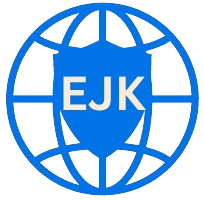
One of the main hurdles for those launching a business is the big question, and that is on Website development Cost. The truth is, website development costs can vary significantly depending on a range of factors, and it’s not always easy to find clear answers online.
In this guide, we’ll break down the key elements that influence price, the hidden costs you might not have considered, and why it’s better to view your website as a long-term investment rather than just another business expense.
Table of Contents
ToggleUnderstanding What You’re Paying For
When considering website development costs what you’re really paying for is expertise, time, and the infrastructure to deliver a polished, high-performing website that supports your business. While anyone can create a website, just like with a car you would like to think that you would take the car to a garage for a major engine refit, and not do it in your backyard.
Scope and Complexity
The number of pages and required features play a major role. A simple brochure site with five pages costs significantly less than a 40-page e-commerce platform or a site with custom functionality such as calculators, booking tools, or gated content.
The more tailored your site needs to be, the more hours go into development, testing, and refining, especially across devices and browsers.
Custom Design vs. Templates
Some businesses can work well with a pre-designed template. It’s quicker to launch and less expensive. But templates often come with limitations. A custom design, while more costly, allows for full branding control, cleaner performance, and long-term flexibility, particularly important if you plan to grow or reposition your brand in the future.
Types of Sites and Their Cost Differences
The type of site, whether a brochure website, ecommerce platform, membership site or custom web app dramatically affects cost.
A small brochure site may range from £1,000–£3,000, while custom ecommerce builds can exceed £10,000 depending on features.
Working With the Right Team
Who you hire is as important as what you need. it is also very important that your developer understands your business, and you get along with them too.
Freelancer, Small Studio, or Agency?
A local freelancer may quote £1,000–£2,000, while a larger agency may price a similar project at £6,000+. That’s not always about quality, it’s about the developers infrastructure, staff, and support.
| Provider Type | Typical Cost Structure |
|---|---|
| Freelancers | More affordable, flexible, but limited capacity |
| Small Studios | Balanced cost, usually strategic and hands-on |
| Larger Agencies | Higher price point, ideal for larger or ongoing projects |
There’s no single best choice, it largely depends on your project’s size, the level of support you want, and how quickly you need things delivered. Agency web design typically involves larger teams, project managers, and specialist roles like UI/UX, content strategists, and SEO experts. This makes them well-suited for larger or multi-stakeholder projects.
This means that larger agencies are often the best fit for corporate websites that require compliance, high-level security, and extensive stakeholder input.
Offshore Development and Regional Rates
Offshore development in regions such as Eastern Europe or Asia can offer very competitive hourly rates.
While this can reduce costs, significantly it’s important to consider potential time zone issues, communication delays and misunderstandings, and differences in legal recourse in the event of any problems.
Beyond the Build: Ongoing Costs
Many businesses budget for the website but forget to account for what happens after launch.
Maintenance and Support
Websites aren’t static. Regular software updates, backups, security patches, and small content tweaks are essential. Some developers offer ongoing support via monthly retainers; others bill as needed. Either way, maintenance is non-negotiable for performance and security, and often cheaper than fixing the problem afterwards.
Typical ongoing costs to factor in:
Hosting of your site
Domain name registration
Maintenance and support
Content and SEO
Even if you’re providing your own copy, consider whether you’ll need help optimising it for search engines or keeping it updated as your services evolve. These elements can affect the total cost and long-term value of the site.
Return on Investment (ROI)
A common hesitation with web development costs is focusing solely on the upfront figure. But a well-built website is a business asset.
For example, if your site costs £10,000 but brings in just 3 clients a month at £500 each, that’s £18,000 per year in new business, a solid return that continues year after year.
Quality design, usability, and SEO all contribute to how well your site performs. That’s why cutting corners can cost more in the long run.
From a business sense perspective, your website isn’t just a digital brochure, it’s a sales tool. A professional design and clear messaging can help convert visitors into clients, generating tangible ROI.
What You Might Not Need
Some things simply aren’t worth paying for, and steering clear of them could save you hundreds.
Avoid:
“All-in-one” builder packages with high monthly fees and limited control
Paying extra for mobile responsiveness or SEO basics (these should be included)
Long contracts for simple websites that lock you into overpriced support
Always ask what’s included and ensure you’re not being upsold features that don’t serve your goals.
Setting Realistic Timelines
Time affects cost. Most professional developers estimate work by week, month, or total hours, depending on complexity for design, development, and testing, but they rely on the clients input to stay on track. Scope changes or delays in content delivery can lead to increased hours and increased costs.
For example, a standard 8–10 page website may take around 2–4 weeks. Delays in providing content, images, or approvals can extend this significantly. In turn, this might delay launch or incur rescheduling fees, especially if your developer has a busy schedule.
In rare cases, major scope changes or persistent communication issues may also increase costs, this is standard in most contracts.
Own Your Domain, Own Your Brand
Your domain name is your digital address, and a critical part of your business identity. Avoid using free subdomains (like yourbusiness.freebuilder.com), as they look unprofessional and can harm credibility.
Make sure your domain:
Is registered in your business name
Is hosted independently of your web builder, if possible
Can be transferred or renewed without provider lock-in
Owning your domain and content protects your investment, ensures flexibility, and gives you peace of mind. Should anything happen to your developer you also have the option to point the hosting elsewhere.
Who Actually Owns Your Website and Content?
One of the most overlooked aspects of website development is ownership. If you’re working with a reputable developer, you should retain full rights to your website’s design, content, and domain, but this isn’t always the case.
Some platforms or providers restrict access to your own content, or use proprietary systems that prevent you from moving your site elsewhere. This can lead to major issues down the line if you decide to switch providers or rebrand.
It’s essential to:
Ensure your domain is registered in your name
Own the rights to any custom design or content created
Retain access to your site’s files and analytics
Avoid proprietary builders that make migration difficult
If your SEO content is written for you, make sure you have clear usage rights and ownership. After all, it’s your business reputation and search presence on the line.
Beware of “Free” Website Builders
While website builders like Wix, Squarespace, and other drag-and-drop platforms offer a quick start, they often rely on rigid solution templates. These platforms limit scalability and customisation, making them more suitable for personal blogs than growing businesses.
Free or heavily discounted website builders might seem appealing, especially those promoted through social platforms like Facebook or bundled in with unrelated services. But these offers often come with significant downsides:
Limited functionality and poor SEO performance
Hidden fees for essential features
No ownership of the domain or design
Branding that promotes their service, not yours
In some cases, you’re effectively renting your website rather than owning it. This lack of control can be a serious obstacle as your business grows, often you can not move your site from their hosting without paying significant fees that were not initially mentioned, and worse of all they own your content and domain name therefore holding your business to ransom!
Mistakes That Can Increase Your Costs
To avoid overspending, steer clear of these common traps:
Starting without a clear brief or timeline
Frequently changing the scope mid-project
Choosing based purely on price
Underestimating how long content creation takes
Leaving testing and feedback too late
Working with an experienced provider who guides you through these phases can save time and money in the long term.
Conclusion:
Website development costs should reflect your goals, the skills needed to deliver them, and how much value the site can create for your business. While the upfront investment might seem high, the long-term payoff in visibility, credibility, and new business can be well worth it.
Take the time to understand where your budget is going and work with someone who sees your website not just as a project, but as a business tool built to grow with you. We offer a variety of options suited to small and medium businesses and provide maintenance also to keep your website working for years to come.
